The Best Slate Roof Tips and Insights for Homeowners
Considering a slate roof for your home? This article covers the key aspects: what a slate roof is, its benefits, costs, and important considerations.
Key Takeaways
-
Slate roofing is renowned for its historical significance, durability, and aesthetic appeal, with options like hard and soft slate tiles that vary in cost and lifespan.
-
The benefits of slate roofs include exceptional longevity, minimal maintenance, environmental sustainability, and the ability to enhance a home’s value and curb appeal.
-
Despite its advantages, slate roofing involves significant costs and challenges such as the heavy weight requiring structural support, the fragility of the tiles, and the necessity of finding skilled contractors for proper installation.
Understanding Slate Roofing
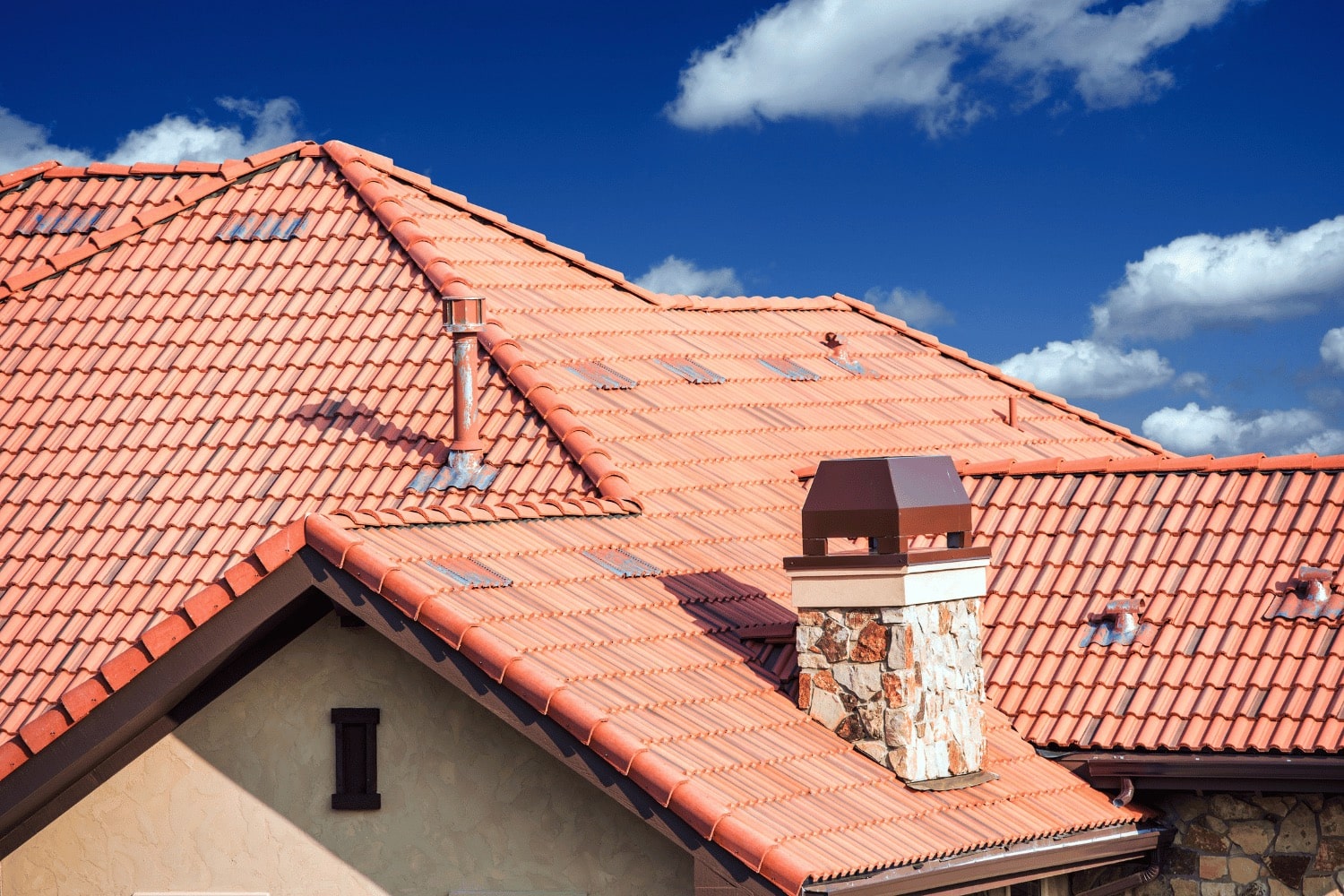
Slate roofing has a rich history, dating back to around 1300 AD when it first appeared on a private home in North Wales, England. Initially reserved for castles and military structures due to its high cost, slate became more widespread in the 1800s when Spaniards began quarrying it for everyday homes. In America, slate roofs have been around since the 1600s, with the first quarry opening in 1785. This historical context underscores the timeless appeal and proven durability of slate as a roofing material.
Derived from shale sediment composed of clay or volcanic ash, slate is a natural stone that forms durable tiles ideal for roofing. These tiles are typically attached to a solid substrate or roof deck on a sloped roof, providing a robust and attractive covering. Understanding the basics of slate roofing is beneficial whether you’re considering a new roof or replacing an old one.
What Is Slate Roofing?
Slate roofing is created from natural stone tiles quarried directly from the earth, making it a unique and durable option for homeowners. These slate roof tile materials, also known as slate shingles, are layered like individual cards in a deck, contributing to their strength and longevity.
A standard slate roof typically has a flat, smooth appearance, while a textural slate roof boasts a rougher, more natural texture, offering a distinctive aesthetic.
Types of Slate Tiles
Natural slate tiles are classified into two main types: hard slate and soft slate. Each type has different characteristics and uses in construction and design. Despite its higher cost of $20 to $30 per square foot, hard slate is a popular choice due to its denser structure, increased durability, and variety of colors. Soft slate, while less expensive at $10 to $20 per square foot, is not as durable as hard slate. The quality of slate tiles can vary significantly based on their source and craftsmanship.
Benefits of Slate Roofs
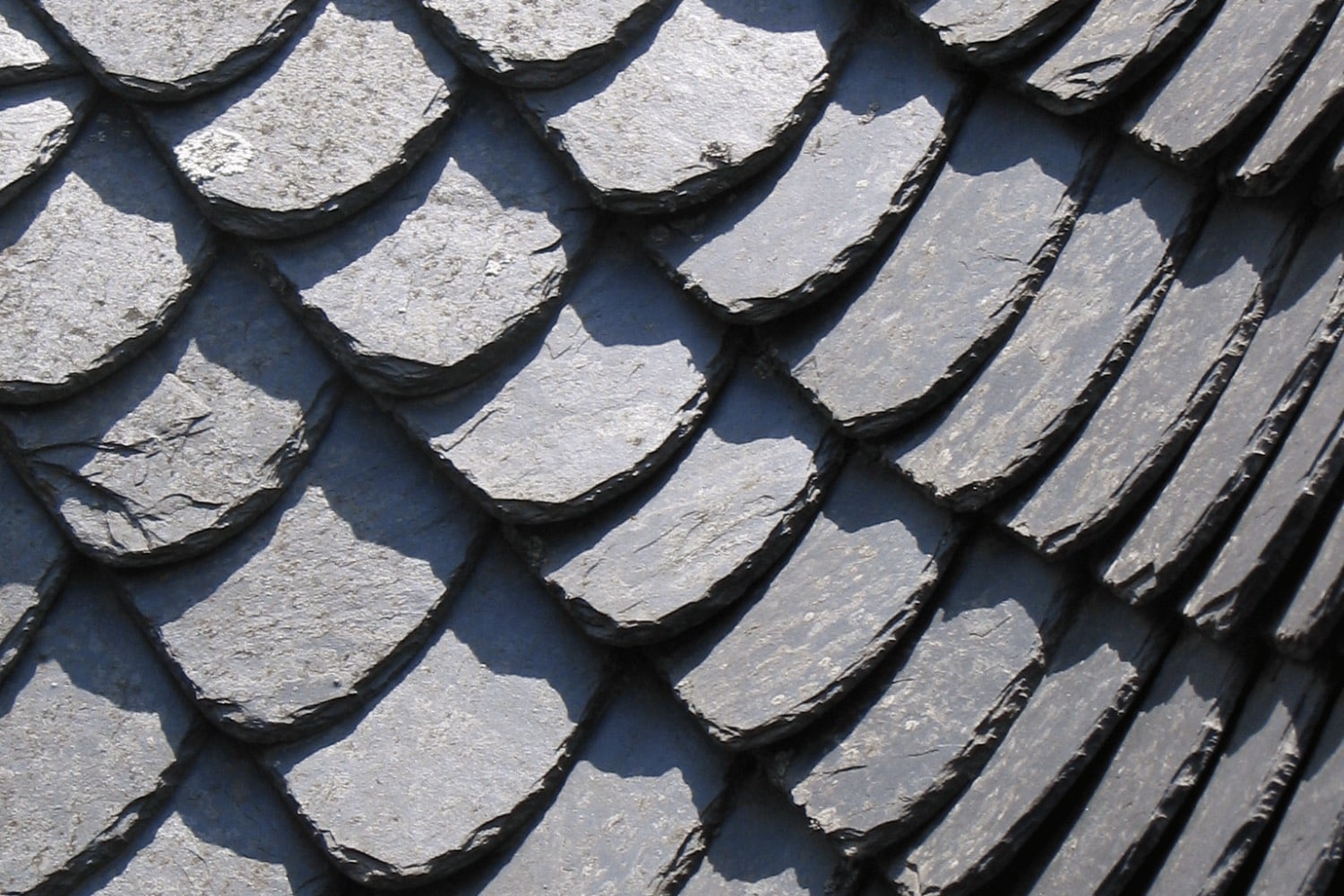
The numerous benefits of slate roofs include:
-
Exceptional longevity
-
Minimal maintenance requirements
-
Natural resistance to mold, fire, and strong winds
-
Enhanced durability and safety
-
Aesthetic appeal that can boost a home’s value and curb appeal
Slate roofs are a long-term investment that can save money over time.
Moreover, slate roofs have a positive environmental impact. Being a natural stone, slate requires minimal processing, reducing its environmental footprint. The long lifespan of slate roofs means fewer replacements and less waste, making them a sustainable choice compared to other roofing materials like asphalt shingles.
Longevity and Durability
Slate roofs are renowned for their longevity, often lasting over a century with proper maintenance. A slate roof can last anywhere from 50 to 200 years, significantly outlasting other roofing materials. This exceptional durability means that a well-maintained slate roof can outlive the homeowner, making it a sound investment for those looking for a long-term roofing solution.
Aesthetic Appeal
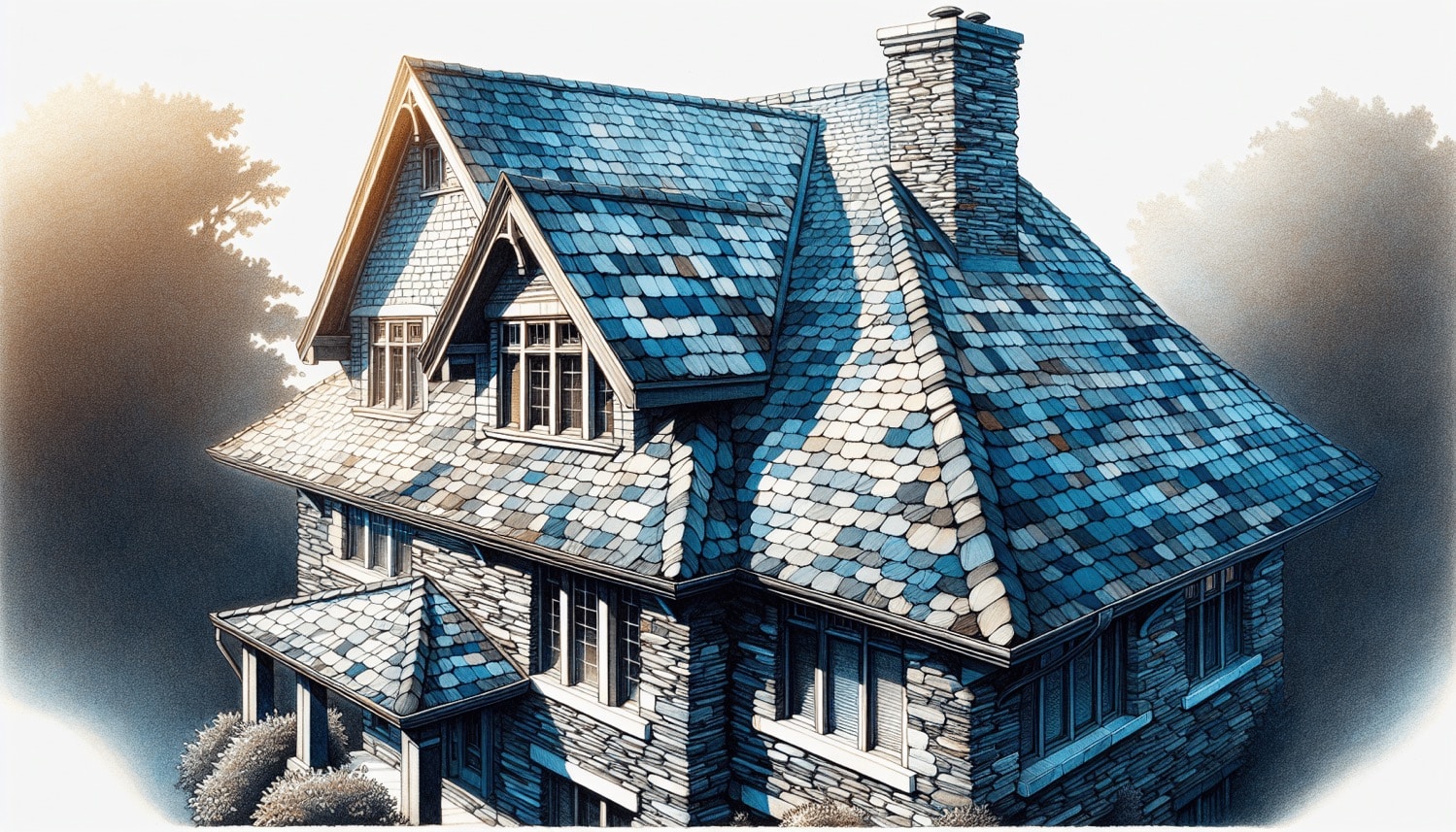
One of the most compelling reasons to choose slate roofing is its aesthetic appeal. Slate roofs offer a wide range of choices to suit any home’s style, including:
-
Deep grays
-
Blacks
-
Earth tones
-
Vibrant greens
The unique texture and natural variations in slate tiles enhance the visual appeal of natural slate tile, adding a timeless beauty to homes.
The natural beauty of a natural slate roof, especially multicolored slate roofs, can blend with the surrounding landscape, elevating the property’s overall charm.
Environmental Impact
The natural composition and long lifespan of slate make it an eco-friendly roofing option. Unlike asphalt shingles, which contribute to landfill waste, slate roofs are highly durable and require minimal replacements. Slate can also be recycled, making its end-of-life disposal more environmentally friendly.
This sustainability, combined with the reduced need for frequent replacements, makes slate a green choice for environmentally conscious homeowners.
Costs Associated with Slate Roofing

While the benefits of slate roofing are substantial, the slate roof costs associated with it are equally significant. Here are some key cost considerations:
-
Slate roofs can be up to five times more expensive than other roofing materials, with costs ranging from $10 to $30 per square foot, translating to $5,000 to $50,000 for a typical house.
-
Higher installation costs are due to the weight of the tiles and the requirement for an expert slate roofing contractor.
-
The labor costs for roofing can vary significantly, typically ranging between $600 and $1,500 per square. These costs depend on factors such as the complexity of the project and the location.
In addition to the material and installation costs, homeowners should also consider the expenses related to maintenance and repairs. Although slate roofs require minimal maintenance, when repairs are needed, they can be costly due to the difficulty of finding matching tiles and the need for skilled professionals. Regular inspections and prompt repairs are essential to maintain the integrity of a slate roof.
Material Costs
Durability, color, and thickness are factors that cause variations in the cost of slate tiles. High-quality slate tiles, known for their attractiveness and sturdiness, can cost significantly more than lower-quality options, sometimes up to three times as much. This high initial cost is due to the manual labor and natural materials involved in producing slate tiles.
Installation Costs
The need for specialized skills and tools for installing a slate roof escalates the labor costs. Labor costs for slate roof installation range from $5 to $15 per square foot, depending on the expertise of the roofing contractor.
Additionally, removing an old roof before installing a new slate roof can add an extra $2 to $5 per square foot.
Maintenance and Repair Costs
Repairing slate roofs can be expensive due to the difficulty of finding matching tiles and the need for skilled professionals. Regular maintenance involves checking for cracked, displaced, or missing slates, especially in areas where different roof planes meet.
Ensuring the integrity of flashing and removing debris such as moss and leaves are also crucial for maintaining a slate roof.
Challenges of Slate Roofing
Despite its many benefits, slate roofing comes with its own set of challenges. One of the primary concerns is the weight of the slate tiles, which can range from 675 to 1,870 pounds per 100 square feet. This substantial weight requires homes to be built or retrofitted to support it, often involving additional structural modifications approved by a structural engineer.
Another challenge is the fragility of slate tiles. They can break during installation or if walked on, necessitating careful handling and skilled installation. Additionally, finding a skilled contractor experienced in slate roof installation is crucial for a successful project. The specialized nature of slate roofing means that not all roofing contractors have the necessary expertise. Homeowners must ensure they hire a qualified professional to avoid potential issues and costly mistakes.
Weight Considerations
To prevent damage or failure, the roof structure must be strong enough to bear the heavy weight of slate tiles. Homes not originally designed to support the weight of a slate roof may need significant structural modifications, adding to the overall cost. It’s essential to assess the home’s ability to bear this extra weight before proceeding with slate roof installation.
Fragility
Slate tiles are known for their fragility, which makes them prone to breaking during installation or if walked on. This fragility necessitates careful handling and skilled installation to avoid costly repairs.
Cracked or broken tiles require immediate attention to prevent moisture infiltration and further damage.
Availability of Skilled Contractors
It’s pivotal for a successful project to find a skilled contractor with experience in slate roof installation. Slate roofing involves specialized techniques and tools, and improper installation can lead to significant issues.
Homeowners should thoroughly vet potential contractors to ensure they have the necessary expertise and experience.
Synthetic Slate Roofing
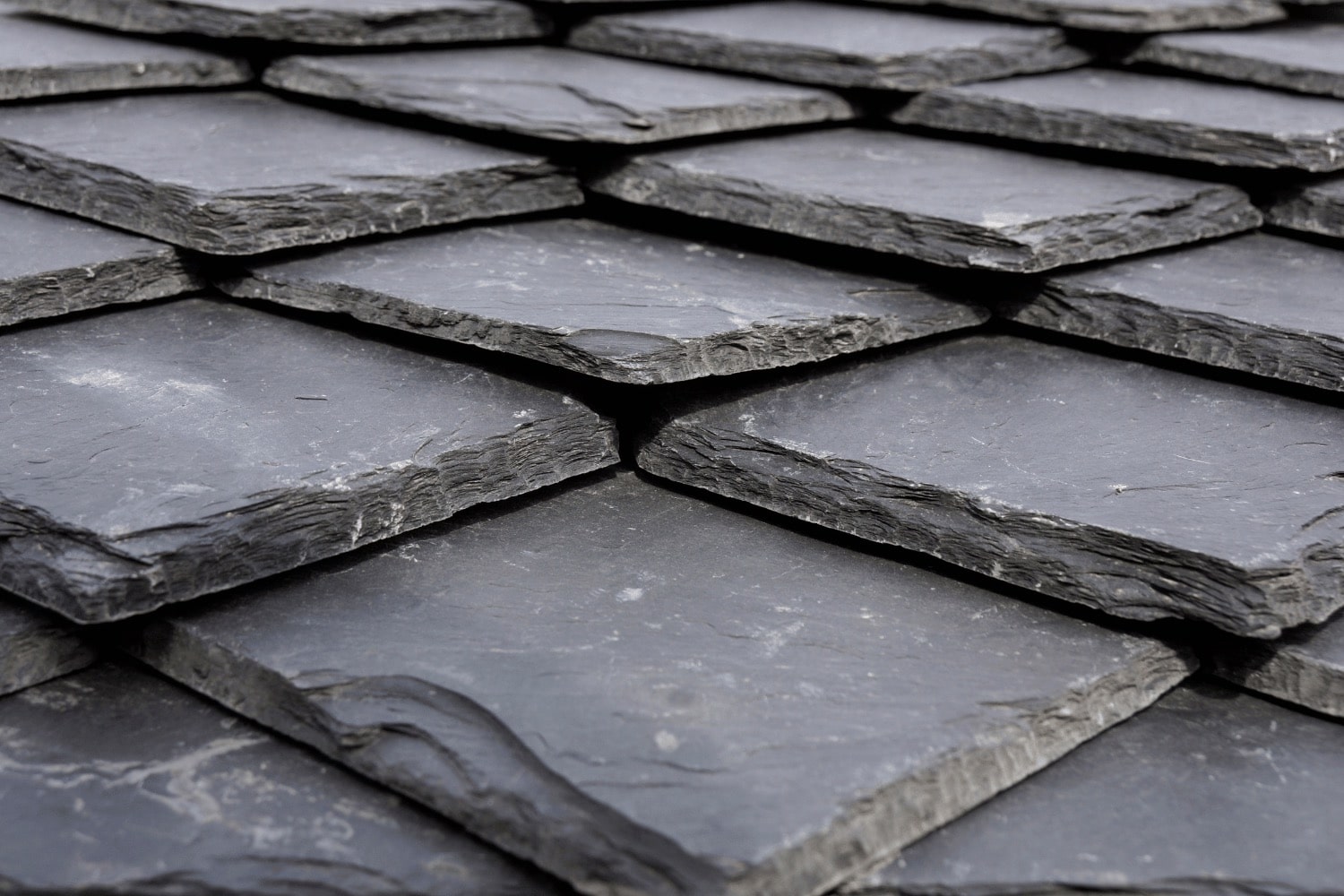
For homeowners seeking the look of slate without the associated costs and challenges, synthetic slate roofing offers an attractive alternative. Synthetic slate, designed to mimic the appearance of natural quarried slate, is made from recycled plastics and other sustainable materials. It is less expensive, lighter, and easier to install than natural slate, with prices ranging from $5 to $10 per square foot. Additionally, synthetic slate is eco-friendly, as it often contains up to 80 percent recycled materials.
As synthetic slate hasn’t been on the market as long as natural slate, its longevity is still under evaluation. While some products can withstand extreme weather conditions, the overall durability and lifespan of synthetic slate remain to be seen.
Advantages of Synthetic Slate
Synthetic slate roofing offers several advantages over natural slate:
-
It is less expensive
-
Easier to install
-
Lighter, reducing both material and labor costs
-
Can withstand harsh weather conditions
This makes synthetic slate a durable and practical choice for many homeowners.
Comparing Synthetic and Natural Slate
Although synthetic slate attempts to mimic the appearance of natural slate, some products may not perfectly replicate its look, appearing obviously fake. Natural slate has a proven track record of durability, with lifespans ranging from 50 to 200 years, whereas the longevity of synthetic slate is still being assessed.
Top Brands and Products
When it comes to slate roofing, several top brands offer high-quality products in both natural and synthetic options. For natural slate, Vermont Structural Slate and Buckingham Slate are well-known for their exceptional durability and aesthetic appeal. These brands provide a wide variety of slate products sourced from reputable quarries, ensuring consistent quality and performance.
In the synthetic slate market, brands like Enviroslate by Enviroshake and Euroshield offer premium products that closely mimic natural slate while surpassing its durability. CertainTeed, DaVinci Roofscapes, and Brava also provide excellent synthetic slate options, offering a range of colors and styles to suit any home.
Leading Natural Slate Brands
Among the leaders in the natural slate industry are Vermont Structural Slate and Buckingham Slate, both renowned for their high-quality products. Vermont Structural Slate offers a variety of slate products sourced from different quarries in the United States, ensuring consistent quality. Buckingham Slate, on the other hand, is known for its traditional appeal and exceptional durability, with slate quarried in Buckingham County, Virginia.
Additionally, Spanish brands like Cupa Pizarras and Del Carmen provide top-tier slate that meets stringent performance and aesthetic standards.
Best Synthetic Slate Options
In the synthetic slate market, standout options include synthetic slate shingles from:
-
Enviroslate by Enviroshake, which combines the aesthetics of natural slate with superior durability
-
Euroshield, crafted from recycled tires, offering resilience akin to rubber
-
CertainTeed, DaVinci Roofscapes, and Brava, all of which provide synthetic slate that closely mimics the look and feel of natural slate while offering varied colors and textures.
Installation Process
A successful slate roofing installation requires both specialized tools and expertise. The process begins with a thorough assessment of the existing roof structure to ensure it can support the weight of slate tiles. Key tools needed for slate roof installation include:
-
Slate hammer
-
Ripper
-
Slate cutter
-
Punch for creating nail holes
Given the complexity and precision required, slate roof installation is not recommended as a DIY project and should be handled by experienced professionals.
For a successful slate installation, proper preparation is a must. This involves removing old or damaged roofing materials, inspecting and repairing the roof deck, and installing a layer of roofing felt to protect against moisture. The installation itself involves laying the first row of slate tiles along the bottom edge of the roof and securing each tile with copper or stainless steel nails.
Post-installation care includes regular inspections and cleaning to maintain the roof’s appearance and structural integrity.
Preparing Your Home
Preparing your home for slate installation involves several essential steps:
-
Assess the condition of the existing roof structure to ensure it can support the weight of slate tiles.
-
Remove any old or damaged roofing materials to create a clean surface.
-
Inspect the roof deck for damage and make necessary repairs to provide a solid base for the new slate tiles.
Finally, install a layer of roofing felt to protect against moisture and create a level surface for the slate tiles.
Installation Steps
The installation of slate roofs requires precise steps to ensure durability and proper function. Begin by laying the first row of slate tiles along the bottom edge of the roof, securing each tile with copper or stainless steel nails. Use a slate cutter to trim tiles around obstacles like chimneys and vents.
Subsequent rows should be staggered to create an overlapping pattern that promotes effective water drainage. Ensure a 6-12mm clearance between each slate and position nail holes 20-25mm from the slate’s long edge for optimal stability.
Post-Installation Care
Post-installation maintenance is key to ensuring the longevity of a slate roof. Here are some important steps to follow:
-
Regularly inspect the roof for cracked, displaced, or loose tiles. These should be repaired or replaced as soon as possible to prevent further damage.
-
Clean the roof with a gentle solution to maintain its appearance and structural integrity. Avoid using harsh chemicals or high-pressure washing, as this can damage the slate.
-
Remove debris such as leaves and branches from the roof. This will prevent moisture retention, which can lead to damage over time.
By following these maintenance steps, you can keep your slate roof in excellent condition for years to come.
Ensuring that gutters and downspouts are clear of debris is also crucial for proper drainage.
Is a Slate Roof Right for You?
Several factors need to be considered when deciding if a slate roof is the right choice for your home. Assessing your home’s structure is crucial, as slate tiles are significantly heavier than most other roofing materials. Homes must be structurally capable of supporting this weight, which may require additional reinforcement. Budget is another critical factor, as slate roofs are among the most expensive roofing options. While the initial cost is high, the long-term benefits can outweigh these expenses, particularly if you plan to stay in your home for many years.
Personal preferences also play a significant role in this decision. Slate roofs offer a unique aesthetic appeal with natural variations in color and texture that can enhance the beauty of your home. Additionally, slate roofs are known for their outstanding longevity, lasting between 50 to 200 years. Balancing these aesthetic and practical considerations will help you determine if a slate roof is the best choice for your home.
Assessing Your Home’s Structure
Before choosing a slate roof, make sure your home can withstand the substantial weight of slate tiles. Homes not originally designed to bear this weight may require retrofitting, which involves reinforcing the roof structure. Signs of structural issues, such as cracked drywall or malfunctioning windows and doors, should be addressed before installation.
Budget Considerations
Often costing at least four times more than asphalt roofing, slate roofing is among the pricier options available. However, considering the long lifespan and minimal maintenance needs, the initial high cost can be justified over time.
Homeowners who plan to stay in their homes for over 30 years can effectively amortize the high cost of a slate roof, resulting in a lower per-year cost compared to other materials.
Personal Preferences
When choosing a slate roof, personal aesthetic preferences play a pivotal role. The natural variations in color and texture of slate tiles offer a range of options to match your desired look. Additionally, the exceptional longevity of slate roofs, which can last between 50 to 200 years, means you can enjoy the benefits of a beautifully designed roof for generations.
Summary
Slate roofing offers a blend of durability, aesthetic appeal, and environmental benefits that make it an attractive option for many homeowners. Its long lifespan and minimal maintenance needs provide significant long-term value, even though the initial costs are high. The unique texture and color variations of slate tiles can enhance the beauty and value of any home, making it a top choice for those who prioritize aesthetics and longevity.
However, slate roofing also comes with challenges, such as its weight, fragility, and the need for skilled installation. For those looking for a more affordable and lightweight alternative, synthetic slate offers similar benefits with fewer drawbacks. Ultimately, the decision to choose slate roofing should be based on a thorough assessment of your home’s structure, budget, and personal preferences. By weighing these factors carefully, you can make an informed choice that aligns with your needs and goals.
Frequently Asked Questions
How long does a slate roof last?
A slate roof can last anywhere from 75 to 200 years, depending on the quality of the slate and the installation. It is one of the longest-lasting roofing materials available.
Is slate more expensive than shingles?
Yes, slate is more expensive than shingles. The higher cost is due to the natural material, the weight of the slate which requires additional structural support, and the specialized labor needed for installation.
How much does a ready slate roof cost?
The cost of a slate roof can vary widely depending on the type and quality of slate, the complexity of the installation, and the region. On average, you can expect to pay between $20,000 to $50,000 for a slate roof on a typical home.
Is a slate roof better than shingles?
Whether a slate roof is better than shingles depends on various factors including budget, desired longevity, and aesthetic preferences. Slate roofs are more durable and have a longer lifespan than shingles. However, they are also more expensive and require specialized installation and maintenance. Shingles, on the other hand, are more affordable, easier to install, and repair, but they do not last as long as slate.

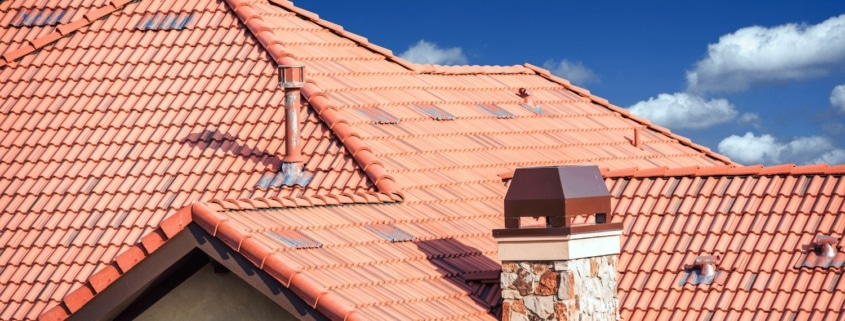


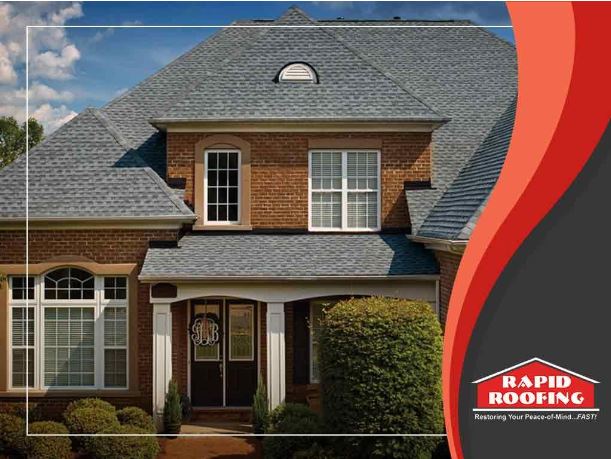

 Residential Roofing
Residential Roofing Storm Damage
Storm Damage Multi-Family Homes
Multi-Family Homes
